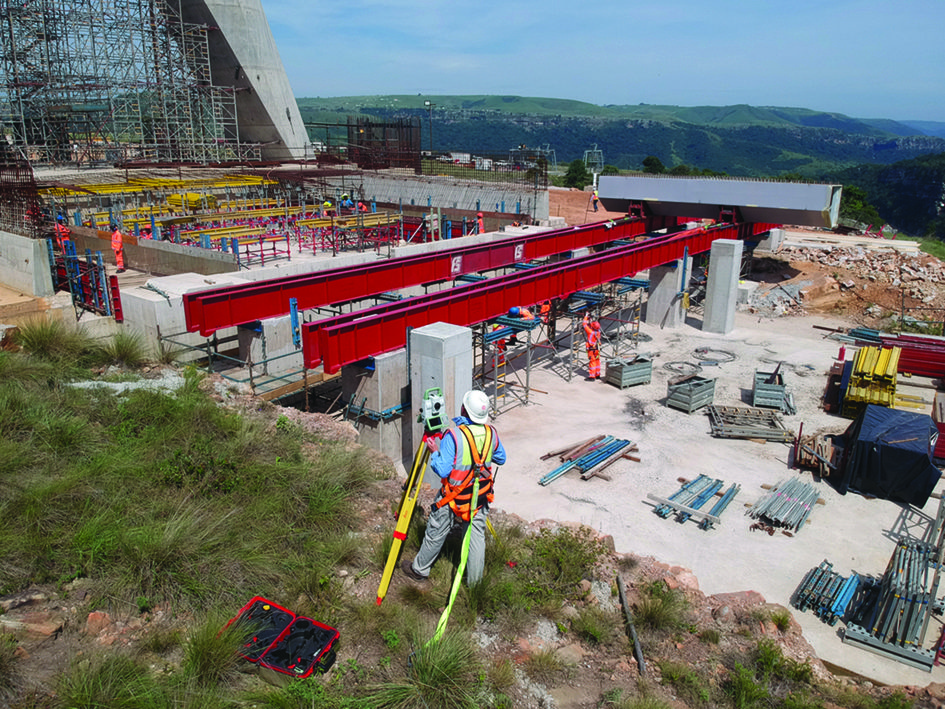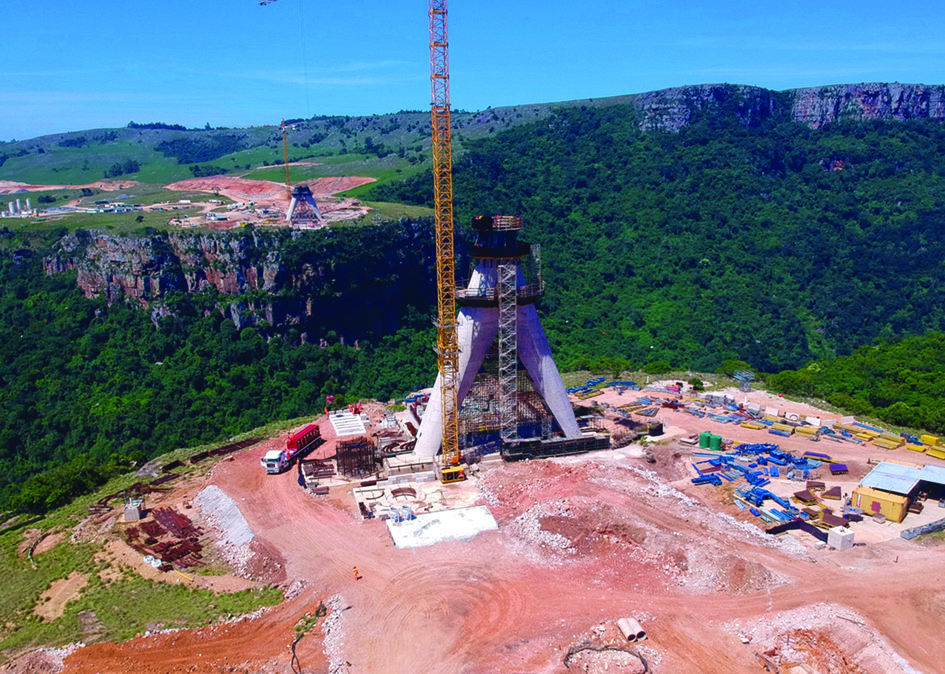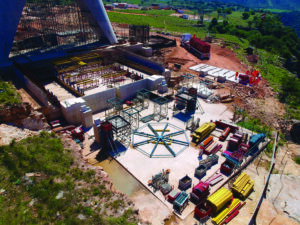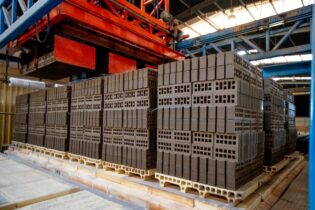Construction of the Msikaba Bridge near Lusikisiki in the Eastern Cape – which started in earnest in late 2019 – is advancing steadily and the project should be complete in the last quarter of 2024.
The Msikaba Bridge, which will span the 198 m deep Msikaba River gorge, forms part of the South African National Roads Agency Limited’s (SANRAL) N2 Wild Coast project and is being constructed by the CME JV, a partnership between Concor and MECSA, both 100% black owned Grade 9CE South African construction companies. The bridge’s four huge anchor blocks are now at a very advanced stage of construction, over 50 % of the concrete for the bridge’s two 127 m high pylons has been poured and the complex deck construction phase of the project is about to start. The project is also maintaining its impeccable safety record. It recorded 3 million Lost Time Injury (LTI) Free hours on 21 October 2022, a major achievement given the challenges that construction presents, including working at both at extreme heights and at depths of up to 20 m in excavations. Commenting on Msikaba, Concor’s Laurence Savage, who is project director, says the cable-stayed bridge – which he describes as “iconic” – is probably the most complex structure of its type ever to be built in South Africa and probably in Africa. “At 580 m in length, it will the longest cable-stayed bridge – in terms of main span – in Africa and it will have the second longest main span of any bridge on the continent. At 192 m above the floor of the gorge, it will also rank as one of the highest bridges in Africa, only exceeded by the Bloukrans Bridge at 216 m and, once it is completed, Mtentu at 223 m,” he says.
With the anchors blocks approaching completion and the legs of the pylons – which make up the first 20 m of the pylon structures – already complete, the focus of the project going forward will be on the construction of the circular pylon spires and the composite steel and concrete bridge deck.
The spires taper from a diameter of 6 m at the point where they start (the top of the inclined legs) to 4.5 m at their full height. To construct them, the JV is utilising a custom designed, four-level, 15-m high climbing formwork system. The pylons are both expected to be fully complete in September 2023. Construction of the bridge deck is an exercise which has to consider the significant wind loads that can sometimes occur at the site, where winds can gust up to 80 km/h. The first 24 m of the deck on either side of the gorge is a reinforced concrete ladder deck that is cast into the first steel deck segment, known as deck segment zero- DS0. Because of crane access restrictions, DS0 will be slid laterally into place before reinforcement is installed and concreted. The remaining segments, DS1 through to DS17 on either side, will be installed using the free cantilevering method, with each segment being installed in sequence.







